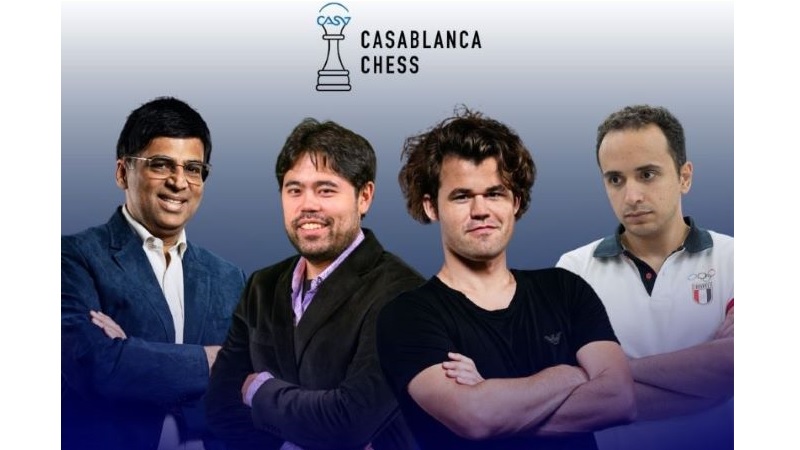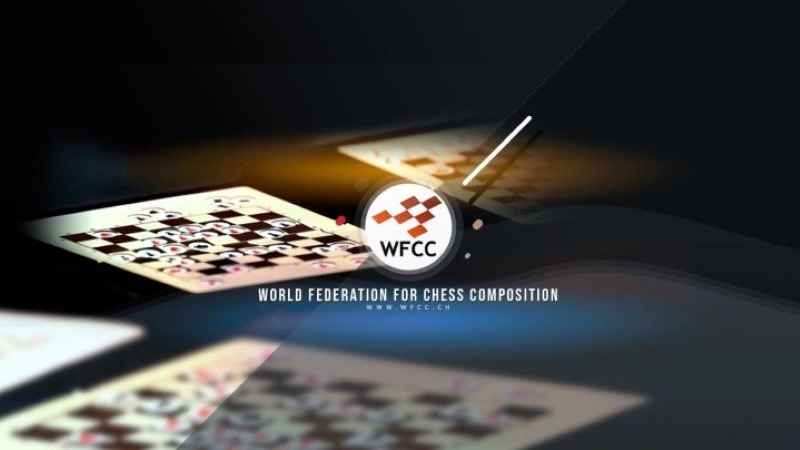FIDE International Chess Day Art Contest announced

The International Chess Federation (FIDE) is thrilled to announce an exciting art contest dedicated to celebrating International Chess Day on July 20. This year, in conjunction with the festivities, we are aiming to set a Guinness World Record attempt for the most chess games played within 24 hours, both online and over the board, with licensed arbiters present. To commemorate this historic event, we invite artists from around the globe to participate in our art contest by creating captivating posters that inspire communities to join us in this remarkable celebration of chess. As we are celebrating the Centenary of the International Chess Federation this year, we are also inviting creative works with the theme “FIDE 100”. Contest Categories: AI Artwork: This category is open to submissions created using artificial intelligence (AI) tools or algorithms. Traditional Artwork: This category is open to submissions created by traditional means, such as drawing or painting. Theme 1: Artwork submissions should focus on promoting and encouraging communities to participate in the Guinness World Record attempt for the most chess games played within 24 hours, emphasizing the excitement and universality of chess as a game that brings people together. Theme 2: Artworks should be created to reflect some of the important chess events that happened in the last 100 years. The artist must reflect on FIDE’s influence in the shaping of the world of chess since 1924. Regulations: Eligibility: The contest is open to artists of all ages and skill levels worldwide. Participants may enter in one or both categories. All submissions must be original works created specifically for this contest. Submission Guidelines: The artwork resolution should be at least 5 megapixels, ideally around 15 megapixels, and the file size should be less than 5MB. Submissions must be in raster image file format (JPEG, PNG, GIF, TIFF) For the Traditional Artwork category, Submissions must be scanned or photographed and submitted in the image file format described above. Each participant may submit only one entry per category. Content Guidelines: Designs should be visually striking and easily understandable, with a clear message encouraging participation. Any text included in the artwork must be in English. Theme 1: The artwork should incorporate the contest theme and prominently feature the date (July 20th) and the event details. Submission Process: Participants must submit their entries via 100.fide.com/fide-international-chess-day-art-contest/ and fill in the application form there. Deadline: The deadline for submissions is July 10th. Judging Criteria: Creativity and originality; Relevance to the theme; Visual impact and aesthetics; Overall composition and design. Prizes: Winners will be announced during the Chess Olympiad in Budapest. Winners will receive a special appreciation certificate from FIDE President; Cash prizes will be awarded for the three best artworks. 1st place: €800, 2nd place: €500, 3rd place:€300. Winning artworks will be printed and displayed at the Olympiad venue. By participating in this contest, artists grant FIDE the right to reproduce, distribute, and display their artwork for promotional purposes related to the International Chess Day celebration, the Guinness World Record attempt, and the FIDE 100 Centenary. Join us in commemorating International Chess Day and FIDE 100 Centenary in style and helping us make history in the world of chess! We look forward to seeing your creative interpretations of this momentous occasion.
Back to the Future with Casablanca Chess!

By GM Hicham Hamdouchi and GM Laurent Fressinet This weekend, the grand chess spectacle will begin in Morocco. Four top grandmasters – Carlsen, Nakamura, Anand, and Amin – will test the new Casablanca Chess Variant, introduced by the Casablanca Stock Exchange. They will start their rapid games from carefully selected positions derived from historical games. The idea of this innovative format was suggested by Tarik Senhaji, CEO of Casablanca Stock Exchange. The schedule will be as follows (all times are local): Saturday, May 18 Round 1 at 4:15 pm / Carlsen vs Anand & Nakamura vs AminRound 2 at 5:30 pm / Amin vs Carlsen & Anand vs NakamuraRound 3 at 6:45 pm / Nakamura vs Carlsen & Amin vs Anand Sunday, May 19 Round 4 at 7:15 pm / Anand vs Carlsen & Amin vs NakamuraRound 5 at 8:30 pm / Carlsen vs Amin & Nakamura vs AnandRound 6 at 9:45 pm / Carlsen vs Nakamura & Anand vs Amin The event will be broadcast live on chess.com. Each round will be preceded by a 15-minute segment dedicated to the selection of the position, either with a guest or via online polls. At the beginning of each round, the players will receive the scoresheets of the chosen position. They will have two minutes to play through the historical game on the board up to the position from which their game will commence. Subsequently, the arbiter will initiate the clocks. The time control will be 15 minutes with a 10-second increment. No draw offers will be permitted. Context There have already been themed tournaments in history, for example, starting with a position from the Buenos Aires or Najdorf variation. Alternative formats have been attempted, such as Bobby Fischer’s Chess960, Anti Chess, Crazy House, or even No Castling in Dortmund (where castling is prohibited). The objective is always the same: to break away from the well-trodden path and offer new horizons to players. Among these, only Chess960 resembles “real chess” in terms of traditional rules and enjoys relative success. The most recent experience to date was the Weissenhaus tournament in Germany, which brought together the world’s top players at classical time controls. It saw Carlsen’s victory. Unanimously, the invited top GMs were delighted with this format. It is true that Chess960 allows for more creativity. Players find themselves immediately in unfamiliar territory and try, not without difficulty, to fall back on classic and familiar patterns. The Casablanca Variant Now, let’s delve into the technical aspects of the Casablanca Variant. The idea is quite different. We stay within the realm of classical chess. Players are given a position from a game that has already been played (or could also be imagined). However, this position must meet several well-defined criteria. First and foremost, the evaluation should be roughly equal (around 0.00, according to engines). The position must be taken from the opening, somewhere between the 6th and 15th moves (although mainly between the 10th and 12th). Most importantly, and this is the most crucial criterion, it must offer rich possibilities for both players. As you may have guessed, the main idea is to have exciting games or, at the very least, encourage the participants to produce them. We will have the opportunity and privilege of having a royal line-up to test this idea (Magnus Carlsen, Hikaru Nakamura, Viswanathan Anand, and Bassem Amin). The positions will be carefully chosen by us (GM Hicham Hamdouchi and GM Laurent Fressinet). The event coincides with the centenary celebrations of FIDE. To further engage the audience, each position will be chosen from a historically significant game. Let’s look at a concrete example: Will Magnus Carlsen choose 14…Rc8? This game was played between Nona Gaprindashvili and Maia Chiburdanidze during their Women’s World Championship match in 1978. It is the 14th round, and the position arises from a Caro-Kann defence after the White’s fourteenth move 14.Rh4. The analysis module sanctions it with an even evaluation 0.00. The most played moves for Black in the database are in the following order: 14…Be7, 14…Rc8, 14…cxd4, and 14…0-0-0. Which strategy to choose? We can easily deduce that the position is rich in possibilities for both sides. We can see the potential opposite-side castling, a white pawn majority on the queenside, as well as other likely imbalances depending on the chosen plan by both sides. In the actual game, Maia chose 14…Rc8. The players quickly transitioned into an endgame in which Black missed a win, settling for a draw on the move 52. One game later, Maia Chiburdanidze was crowned world champion! No preparation possible, unless… It is in this state of mind that we have chosen a total of 18 positions (6×3=18). Before the start of every round, the position players will face off and will be picked out of possible three. After each game, it will be interesting to test the memory and encyclopaedic knowledge of our champions to see if they have managed to place the games: who played them, and when? We hope to witness a grand spectacle despite starting positions presumed to be “equal”. However, rephrasing a well-known expression: all positions are equal, but some are more equal than others!
8th YCCC: Inspiring the next generation of chess composers

The 8th Youth Chess Composing Challenge is on the way! The youngest contributors to chess art (born 2001 and younger) were offered three different sections to inspire their creations till June 10, with five special prizes of 500 Euros vouchers each for the best representatives of the five most successful countries. The vouchers donated by the Fujairah government will be used for development of young talents, helping them to take part in the main WFCC events 2025: World Congress of Chess Composition, World Chess Solving Championship or European Chess Solving Championship. The results of the 8th YCCC will be announced on August 2, 2024, at the closing ceremony of the World Congress of Chess Composition in Jurmala. The tradition of YCCC was established in 2016 to stimulate young minds and to mentor their work. In 2024 not less than 12 well known experts in the field (FIDE grandmasters, international masters and masters of chess composition) will be engaged to comment and evaluate creations of young participants from all around the world. There are three sections: one with the set thematic condition, and two without any restrictions. The Section A is for original problems in 2 moves, with three adjacent black pawns in the same rank and the black King at least three ranks below them. In the solution, each black pawn should move and allow a different mate by White. Why was this unusual condition proposed? The primary goal is to invent something original, as a composer has to avoid repeating the same or very similar content his predecessors have created over more than 170 years of development of the orthodox #2. Searching through the databases is difficult, even for experienced composers. That’s why a very rarely explored pattern was selected. To find such a pattern the Albrecht collection was used. The largest database for two-movers was founded by the late Herman Albrecht (on paper cards) and later extended by Hans-Dieter Leiss to classify around 85.000 #2s. Next, the huge voluntary work was done by the GM Composer Udo Degener to make the collection almost three times bigger, to digitalize it and make it a free online database! At the moment, the Albrecht collection with almost 300,000 #2s by more than 15,000 composers, contains only five examples of the YCCC-8 thematic condition. All of them are presented and explained in the 8th YCCC Announcement, so there is plenty of room for originality. The five discovered examples present only three different locations of the black King (in relation to the pawns) out of 28 possible ones. It means that any presentation of the theme in remaining 25 matrices may be treated as a new record! The main task for young composers will be to present maximal activity of black pawns (three variations with different mates in the solution are thematic minimum). When the numbers of variations are approximately equal, the tireless YCCC Judge David Shire will value other artistic and constructive features. We present here one of the five examples, showing an unusual artistic approach. The author wanted and managed to present the pawns-only play. The 1st move of White, the threat, the defences and mates are all executed by pawns! №1 Albert Servais Problem 1954 (v) Mate in 2 moves There is an eternal discussion if composing chess problems helps improving skills in any other activity. First of all, it improves solving skills to help better understand the internal structure of chess problems. Ural Khasanov (pictured below, born 2006) is currently the 4th solver in the world and the youngest one among the Top 40. His meteoric rise began in 2021, together with his first big successes in YCCC. Photo: Fujairah Chess & Culture Club The thematic condition in the Section A of the 5th YCCC was to have all four Bishops in the corners in the initial position, and to use them in an intensive and interesting way. Ural managed to present four thematic tries activating all four Bishops. More than that, all four threats from the try play reappear as mates in the solution: №2 Ural Khasanov, 1st Place YCCC-5 Section A, 2021 Mate in 2 moves Later on, this #2 was included into the FIDE Album 2019-21, where the best compositions in 3-years cycles were selected. Getting into FIDE Album at the age of 15 is an historical achievement, but it didn’t break the record. For three years this record was held by the author of another YCCC success: №3 Ilija Serafimović, 1st Place YCCC-3 Section B, 2018 White to play and draw In 2018 the endgame section of the 3rd YCCC asked for original endgames presenting sacrifice of white Queen (without capturing). The winning entry included two such sacrifices into interesting play of both sides, and rewarded the 14-years author Ilija Serafimović (pictured below, born 2004) with his first FIDE Album entry! Photo: Fujairah Chess & Culture Club Ilija is the most successful participant of the previous seven YCCCs. His starting interest was composing, but from 2018 on he understood he could solve very well, and is now among the best junior solvers in the world. In fact, the best solvers among juniors show the same tendency: 8 out of the Top 10, lead by the reigning World champion Danila Pavlov (pictured below) have got a composing experience in YCCC. Photo: Fujairah Chess & Culture Club Are there composers among the young chess grandmasters? You might have heard Rameshbabu Praggnanandhaa quoting Oleg Pervakov, the multiple world champion in composing endgames, to be his favourite chess writer, but you probably didn’t know Pragg was also composing helpmates. His compatriot GM Karthikeyan Murali, known for fierce attacks, was taking part in YCCC too, again with helpmates. In general, Indian chess prodigies have wider chess composition culture than the younger generations from other countries. Photo: Eric Rosen And, who is currently the youngest chess composer ever to get in the FIDE Album book? In the year 2019, at the time of becoming the youngest (at that time) International Master in the history of American chess, the current Grandmaster Christopher Woojin Yoo (pictured above, born 19th December 2006) broke another record. He was 12 years and 7 months at the time of sending

